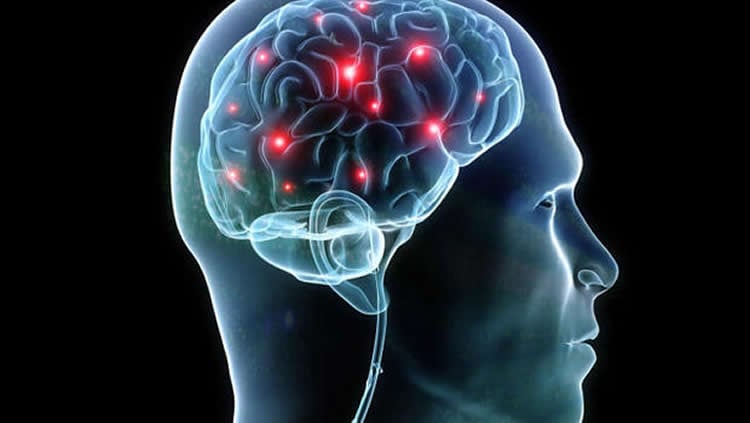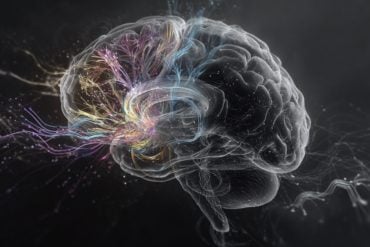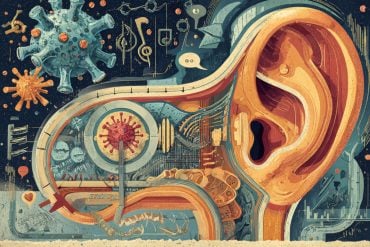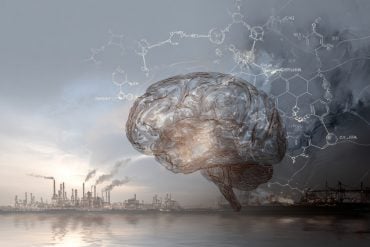Summary: Researchers report they have mapped a portion of a mouse brain that could help explain which circuit disruptions may occur in Autism and Huntington’s disease.
Source: USC.
Brain connectivity atlas assists in the understanding of mental and neural disorders.
USC scientists have mapped an uncharted portion of the mouse brain to explain which circuit disruptions might occur in disorders such as Huntington’s disease and autism.
Hong-Wei Dong, an associate professor of neurology at the USC Mark and Mary Stevens Neuroimaging and Informatics Institute, and his colleagues have been sketching a road map of the mouse brain for the past decade. Their most recent study, published in the journal Nature Neuroscience on June 20, looked at the connections of a part of the brain that is responsible for motor learning, the dorsal striatum, which is stationed near the front of the brain.
Scientists injected fluorescent molecules into about 150 mouse brain structures and used a high-resolution microscope to document the molecules as they moved through the brain’s “cellular highways,” which need to be in tip-top shape for different parts of the brain to communicate and coordinate behaviors. In the previously unsurveyed dorsal striatum, USC researchers were able to identify 29 distinct areas responsible for things such as eye movement, mouth and facial movements and pain information processing. They also located hubs that coordinate complex limb movements.
Parkinson’s disease, obsessive compulsive disorder, attention deficit hyperactivity disorder and many other movement disorders involve connections of this brain region, said Dong, senior author of the study. Researchers in the Dong Lab followed circuitry paths from beginning to end in the same way someone might pick up a ball of yarn and slowly unravel it.
“This study moves researchers to the next level to help them understand how the brain circuit is disrupted,” Dong said. “Previously the dorsal striatum was one huge thing. It’s almost like telling someone they should come visit you in California. Where should they go? We have really narrowed it down – I live in North Hollywood in this apartment building. That will help people in the future to really understand the pathways for diseases with specific symptoms.”
Early symptoms of Huntington’s disease, for example, include slow or abnormal eye movement and stuttering. Most patients experience depression and have psychiatric issues such as social withdrawal and insomnia, Dong said. His lab has subdivided the dorsal striatum so scientists can better predict problem areas in this brain structure and focus their research there.
“Of course, humans and mice are different, but they are both mammals,” Dong said. “The biggest differences reside in high-level cognition. So we can use the organization of the mouse brain to understand how human brains are organized.”
After all, most scientific research begins at the mouse level. Understanding the mouse brain is of critical importance and will potentially lead to the development of new drugs and medical therapies.
Adding massive detail to a historically basic brain atlas
The cerebral cortex is the brain’s CEO; it regulates higher-order functions such as motor learning and attention through its connections to brain structures such as the dorsal striatum, which is historically divided into just four regions. Today, USC researchers said they are the first to create the most comprehensive map of connections between the dorsal striatum and the cerebral cortex that is available for any mammal.
“If you have one big structure, it’s very difficult to know which part is the problem area,” said Houri Hintiryan, lead author and assistant professor of research at the Laboratory of Neuro Imaging at the Keck School of Medicine of USC. “This study shows 29 different parts of this brain region receiving information from the cerebral cortex. We’re providing a structural basis for studies seeking to understand which part of the brain does what.”
The big data project is publicly available at the Mouse Connectome Project and will aid in the leap toward precision medicine, Dong said. Next on his team’s mapping list is the hippocampus, which is the center of emotion, memory and the autonomic nervous system. A detailed atlas of this area could further Alzheimer’s disease research.

“With our brain map, researchers could look for circuitry-specific drug discovery,” Dong said. “Now we provide a very clear map to help people do stem cell research. They know exactly where to put stem cells.”
Dong chose to map the mouse brain so his lab could examine individual neurons and axons, gateways to neighboring neurons. In contrast, the human brain would look pixelated if the scientists zoom in for the detail needed to develop their meticulous maps.
Many USC scientists use big data to find answers to intractable problems such as Alzheimer’s disease and PTSD. In fact, USC houses the Enhancing Neuro Imaging Genetics Through Meta Analysis (ENIGMA) network, a collaboration of 190 global institutions. ENIGMA is home to the largest brain-mapping project in the world.
Funding: The study was supported by the National Institutes of Health/National Institutes of Mental Health (MH094360-01A1), NIH Big Data to Knowledge (BD2K) Initiative grant (U01CA198932-0), a subcontract from one NIH BRAIN Initiative grant (U01MH106008-01), the CHDI Foundation and the Laboratory of Neuro Imaging Resource (EB015922).
Source: Zen Vuong – USC
Image Source: This NeuroscienceNews.com image is credited to Allan Ajifo and is licensed CC BY 2.0.
Original Research: Abstract for “The mouse cortico-striatal projectome” by Houri Hintiryan, Nicholas N Foster, Ian Bowman, Maxwell Bay, Monica Y Song, Lin Gou, Seita Yamashita, Michael S Bienkowski, Brian Zingg, Muye Zhu, X William Yang, Jean C Shih, Arthur W Toga and Hong-Wei Dong in Nature Neuroscience. Published online June 20 2016 doi:10.1038/nn.4332
[cbtabs][cbtab title=”MLA”]USC. “Brain Map Could Enable New Therapies for Autism and Huntington’s: Mouse Study.” NeuroscienceNews. NeuroscienceNews, 20 June 2016.
<https://neurosciencenews.com/autism-huntingtons-brain-map-4523/>.[/cbtab][cbtab title=”USC”]USC. (2016, June 20). Brain Map Could Enable New Therapies for Autism and Huntington’s: Mouse Study. NeuroscienceNews. Retrieved June 20, 2016 from https://neurosciencenews.com/autism-huntingtons-brain-map-4523/[/cbtab][cbtab title=”Chicago”]USC. “Brain Map Could Enable New Therapies for Autism and Huntington’s: Mouse Study.” https://neurosciencenews.com/autism-huntingtons-brain-map-4523/ (accessed June 20, 2016).[/cbtab][/cbtabs]
Abstract
The mouse cortico-striatal projectome
Different cortical areas are organized into distinct intracortical subnetworks. The manner in which descending pathways from the entire cortex interact subcortically as a network remains unclear. We developed an open-access comprehensive mesoscale mouse cortico-striatal projectome: a detailed connectivity projection map from the entire cerebral cortex to the dorsal striatum or caudoputamen (CP) in rodents. On the basis of these projections, we used new computational neuroanatomical tools to identify 29 distinct functional striatal domains. Furthermore, we characterized different cortico-striatal networks and how they reconfigure across the rostral–caudal extent of the CP. The workflow was also applied to select cortico-striatal connections in two different mouse models of disconnection syndromes to demonstrate its utility for characterizing circuitry-specific connectopathies. Together, our results provide the structural basis for studying the functional diversity of the dorsal striatum and disruptions of cortico-basal ganglia networks across a broad range of disorders.
“The mouse cortico-striatal projectome” by Houri Hintiryan, Nicholas N Foster, Ian Bowman, Maxwell Bay, Monica Y Song, Lin Gou, Seita Yamashita, Michael S Bienkowski, Brian Zingg, Muye Zhu, X William Yang, Jean C Shih, Arthur W Toga and Hong-Wei Dong in Nature Neuroscience. Published online June 20 2016 doi:10.1038/nn.4332






